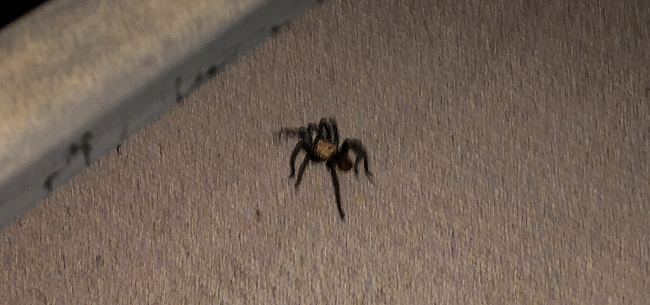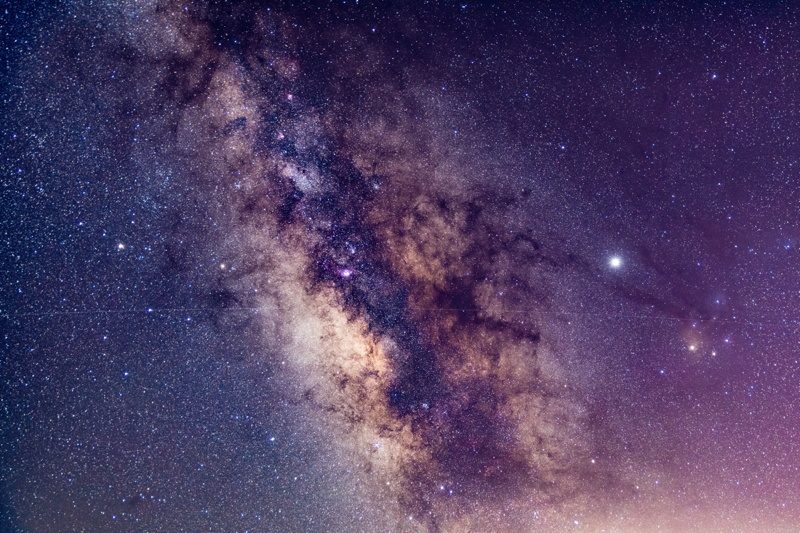Critters, Planetary Society LightSail 2 Satellite
Posted: 25 August 2019
I got lucky Wednesday morning, 21 August 2019, and saw a Sonoran Whipsnake in a mesquite tree in our backyard. It was about 4 feet long. Thanks to local resident George for the identification.


Clouds returned mid-day on Wednesday and continued until late Saturday afternoon, 24 August. As sunset approached the sky was clearing. I decided to set up the iOptron SkyTracker Pro on the observatory patio to make another attempt at photographing the Planetary Society LightSail 2 satellite. I did not open the observatory dome as I was too tired after several hours of building a DIY set of shelves for the wife during the day.
|
Setup: Saturday, 24 August 2019, 1939 MST Temperature: 93°F |
Session: 1377 Conditions: Mostly clear |
Equipment Used:
SkyTracker Pro
Camera:
D850 DSLR
When I arrived at the observatory a tarantula was rapidly crossing the observatory patio. This was a quick photograph (poor focus):

I set up the SkyTracker Pro (STP) with the D850 DSLR and 24-70mm lens on the patio.

I polar aligned the STP and then did some test exposures of the southern sky where the LightSail 2 would pass. This photo (f/2.8, 14 seconds, ISO 3200, White Balance 4550K, FL 24mm) taken before the end of astronomical twilight shows some of the clouds that were in the sky.

There are three faint satellites visible in the above photo; two near Saturn left of the Milky Way and one at the far right. Jupiter is the bright object just to the right of the Milky Way.
As the LightSail 2 pass began at 2018 MST I began looking for it. It was predicted to get as bright as Mag. +6.1. It became visible to the eye about 2021 MST. I began the following exposure at 202132 MST (f/2.8, 188 seconds, ISO 1600, White Balance 4550K, FL 36mm; slight crop).

Click or tap on image for larger version
The LightSail 2 satellite is faintly visible in the photo just below the middle of the entire photo as it crossed horizontally from the west (right) to the east (left) across the sky, passing below Jupiter at the right, then through the heart of the Milky Way, and below Saturn at the left. Click the photo to see a larger version that shows the satellite better.
With the clouds increasing I ended this session.
|
Done: Saturday, 24 August 2019, 2040 MST Temperature: 89°F |
Session Length: 1h 01m Conditions: Partly cloudy |
Comments are welcome using Email. Twitter users can use the button below to tweet this report to their followers. Thanks.
Cassiopeia Observatory Home Page
Copyright ©2019 Michael L. Weasner / mweasner@me.com
URL = http://www.weasner.com/co/Reports/2019/08/25/index.html
